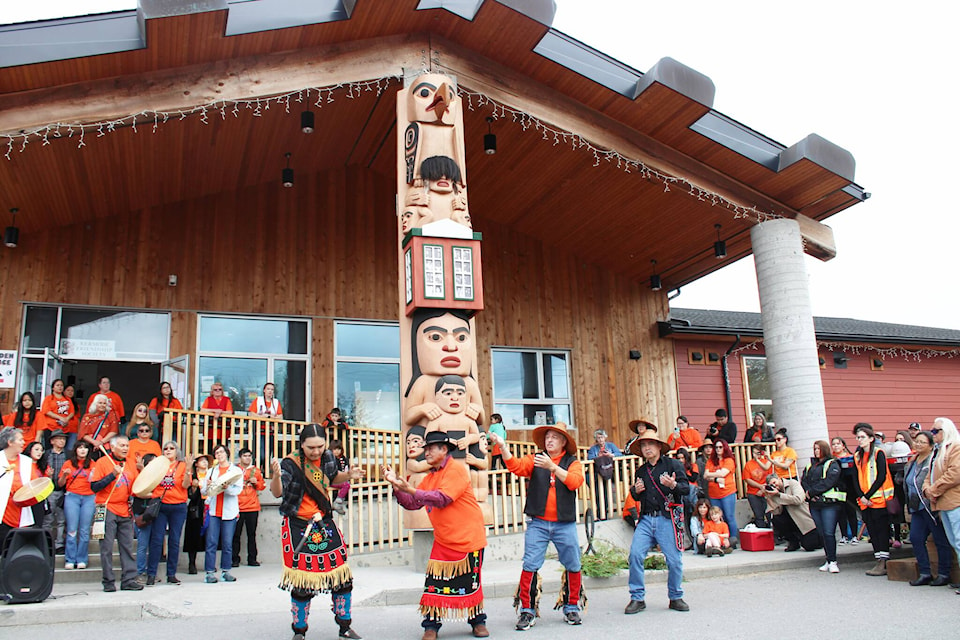The Kermode Friendship Society raised a totem pole on the National Day for Truth and Reconciliation, Sept. 30 in front of its Waaps Sagayt K’uulm Goot multi-purpose building at 4714 Park Ave. in Terrace.
The commemorative totem pole was made by Tsimshian, Tahltan and Tlingit master carver Stan Bevan, working with his team — including Brian McKee (Tsimshian), James Lewis (Tsimshian and Tahltan), and Kobe Antoine (Nedut’en) — to create it.
“When this project first started there was no truth and reconciliation day. It was before Kamloops, news of the 215 children,” Bevan said.
“It was an emotional journey while working on this pole. I’m hoping that this pole tells its story in itself.”
During the ceremony residential school survivors offered prayers and the pole was blessed before rising to take its place in front of the building, to the sound of drums. The carvers then walked around the pole.
Cal Albright who worked to get the Park Ave. building built during his time as director of the Kermode Friendship Society, spoke with emotion after the totem pole raising.
“This is an amazing project that happened and it’s been such an emotional experience to see this. I’ve been touched. There’s healing going on today,” Albright said, adding that residential schools will never happen again.
“It’s a bitter sweet experience because we remember the people and our relatives years ago that didn’t make it and then we have survivors… We’re healing and it’s a process.”
The wish for the totem pole is to educate the truths of the residential schools and help along the long journey ahead, Bevan explained to the gathered crowd. “This pole was a monumental task.”
There are figures of the mother and children and Bevan explained you can see that the children are sad, one holding a book representing separation from culture and separation of identity.
A figure with a red sash represents the Métis people. Pictures of children who went to the Port Alberni residential school are inlaid in the pole that Bevan said represents all the children of Canada who attended those schools.
Children are represented looking through windows and longing to go home.
“There are thousands of stories. These aren’t just children these are stories,” Bevan said.
Among the inlaid photos are two pictures in the bottom middle, one of them is Terrace resident Albert Etzerza, who recently passed away.
Etzerza wrote his own story in a book called The Good, The Bad and the Innocent about his time at the Lower Post Residential School. Bevan said his older uncles and aunties also attended that school along with many Tahltan people.
Another is Victoria Stewart of the Tsimshian nation, who was only nine years old when she died while attending the United Church residential school in Edmonton.
At the top of the totem pole are figures representing the journey now, Bevan said, with an eagle representing culture.
“You can see them all holding onto each other and it’s the culture that’s pulling them out and bringing back their identity.”
READ MORE: New totem pole raised at Coast Mountain College Terrace campus
Do you have a comment about this story? email:
michael.willcock@terracestandard.com
